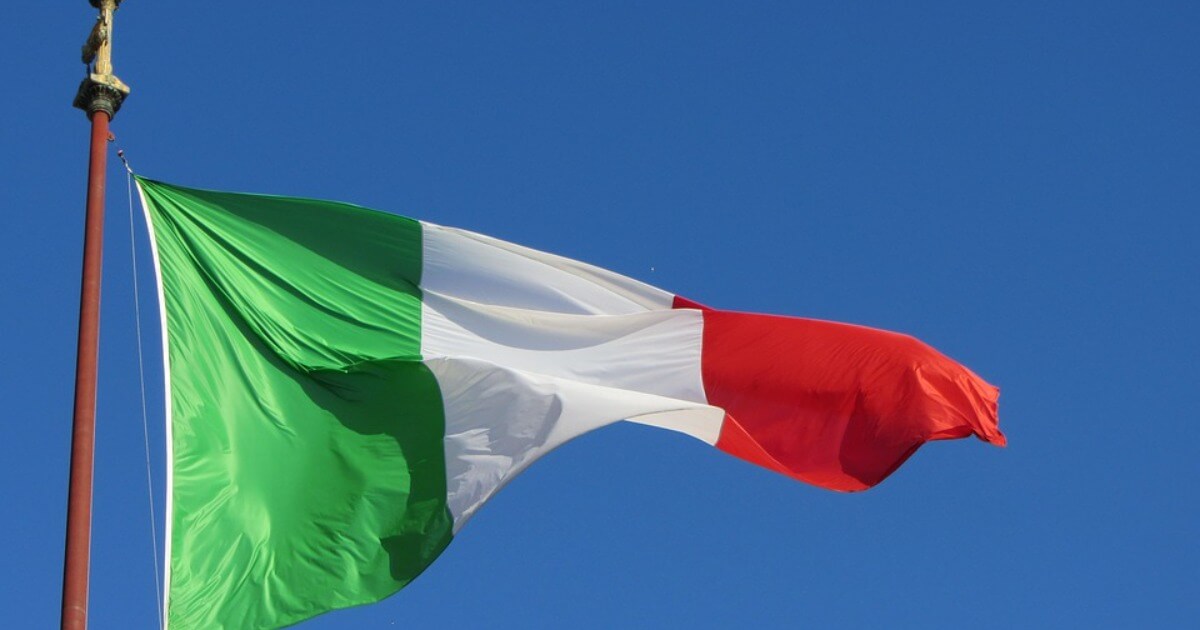Italy: No Political Crisis, But an Economic One
The EU’s patience to throw Italy yet another lifeline after the current one is rapidly vanishing.
January 18, 2021

A new — yet unsurprising — political crisis is looming in Italy, as two ministers from Viva Italia — a small party — pulled out from serving in the government.
This is not what Italians needed in the midst of a pandemic. 2020 was a dramatic year for Italy. And indeed, was a dramatic year for the world.
The COVID 19 pandemic — with its health, economic, strategic and political consequences — is the worst crisis in Europe since the end of WWII.
Europe’s non-performer
Italy – Europe’s third-largest European economy — faces an economic blow with disastrous consequences — the deepest recession in its history.
What we see today is not just the impact of the triple recession — 2008-2009, 2012-2013 and 2020-2021.
More than ever before, the current crisis is bringing to light the decades-long economic under-performance and the deep-rooted structural problems of the Italian economy.
Italians are poorer than 20 years ago
In 2019, real per capita income in Italy — measured in purchasing power parity — was exactly the same as in 2000 (around $ 43,000).
In 2020, as a result of the crisis, it was 13% lower than 20 years ago — at only $37,900.
In contrast, the average real per capita incomes of the other citizens of EU countries have risen at least by 25% — even though many experienced declines in the pandemic year of 2020.
In 2020, the Italian economy contracted by almost 11% — twice as much as during the Eurozone crisis.
Unemployment rates run at 10% — while youth unemployment stands at 31%.
Even the bad numbers may be pretty…
These numbers may even be deceiving — because the Italian government took short-term measures to suspend layoffs, and because of the generally unemployment is a lagging indicator in any recession.
Keeping in mind that the Great Recession was milder in Italy than the pandemic-induced downturn, but resulted in 43% youth unemployment rates and stark increases in absolute poverty, there are grave concerns about the ultimate economic and social effects of the current crisis.
How did we get here?
Before the introduction of the euro, the Italian economic model was mainly based on exports.
Italian exporters benefited from smart branding and competitive prices (via serial devaluations of the lira).
Unprepared for the euro — and without the needed increases of productivity that would decouple competitiveness from exchange rate movements — Italian companies tried to adapt by reducing production costs.
They sought to achieve that especially by relying on imports of semi-finished products — thanks to a strong euro — and by off-shoring to countries with cheap labor costs.
Shortsighted solutions
Not unlike in other countries, but maybe more pronounced, off-shoring by Italian companies not only increased unemployment in the country. Most importantly, it also reduced the purchasing power of Italian workers. This gradually had an impact on the middle class and widened inequality.
As in many other countries, there has also been increasing deregulation and de-unionization.
But even before the adoption of the euro, the Italian economy was structurally weak — due to the important role of Italy’s informal sector.
Any economy with a large informal sector inherently suffers from structural weaknesses that cause parts of the economy to move outside of what is declared as formal.
Italy’s informal sector
The informal economy in Italy makes up at least 12% of Italy’s GDP — leading to constant downward pressures on wages only aggravated by the large influx of immigrant workers in Italy. Any developed economy with a large informal sector is a failed economy.
These decades-old problems were laid bare since the adoption of the euro — since the country’s exchange rate could no longer cushion the blow of its deficiencies.
As a result, the average economic growth rate in Italy has been a negative 0.15% since 2000 — with the highest positive growth rate in 2000 (3.78%) — and the lowest rates in 2009 (-5.28%), 2012 (-2.98%) and 2020 (-10.6%).
Meanwhile, sovereign debt has skyrocketed — from 109% of the GDP in 2000 to 162% in 2020.
Lack of productivity growth holds it back
Italians may blame the euro and the European Union for the current economic crisis.
However, the adoption of the euro is not the cause of the longstanding structural problems and weak productivity growth of the Italian economy. The euro is only the trigger for drawing attention to it.
Almost 50% of the Italians would support leaving the EU (and the Eurozone) — but that is hardly a promising long-term solution.
The world is going to become only more competitive — not less. Giving in to the temptation of going back to the past of competitive devaluations throws a long and dark shadow over Italy’s future.
New recovery plan
Structural issues that affect the competitiveness of the Italian business environment remain the same as they have been for a long time.
They range from excessive bureaucratic procedures, slow judicial conflict resolution, high levels of taxation, tax evasion and a resultingly large informal economy as well as significant regional disparities — the latter despite plenty of EU funds having been made available to bridge those gaps.
Obvious solutions
If the problems are well familiar, so are the solutions: More economic reforms, a leaner, transparent and far more digitalized public sector, a better education system — together with targeted incentives to raise innovation and business dynamics — are needed to increase productivity growth.
The difference between then, and now, is that money is not a problem. The tasks ahead can be financed — even in the face of high public sector indebtedness, provided public funds are used more efficiently.
The EU’s largesse: Last stop for Italy?
The Italian Recovery Plan (Piano Nazionale di Ripresa e Resilienza) — amounting to 209 billion euros and financed by the EU — is supported by Prime Minister Conte and, in some aspects, opposed by Matteo Renzi — the former Prime Minister and leader of Viva Italia.
In terms of resource use, the plan focuses on the Green Deal (37% of the funds), and digitalization (20%).
Notably, Italy is set to receive the largest share of the EU funds — 28% of the entire rescue fund of 750 billion euros.
Forever chasing the vision?
It could be the turnaround moment for a new economy in Italy: Modern, digital, sustainable and inclusive.
It should be obvious that this is the time to put small-minded political interests aside — and to reach a compromise that is in the best interest of Italy, and, more importantly, of its people.
Political expediency or sensible policymaking?
But, by no means, does the fault for the current impasse lie so much with Matteo Renzi.
The Five Stars are at least as much an incapacitating factor, as their political choices — in many ways — are not driven by rational, but irrational choices.
As much as the specter of an Italian government assembling hard-right parties ought to be averted, this requires compromises on all sides of the current government coalition.
Truth be told, whatever the vanity and the antics of Matteo Renzi, on substance his ministers are actually pushing for very sensible reforms.
Disregarding those will only make EU-Italian relations that much more strained in the future.
As things stand, the patience to throw Italy yet another lifeline after the current one is rapidly vanishing.
Conclusion
The current crisis should not be wasted. It is time to move forward.
Editor’s note: The opinions expressed here are those of the author and do not necessarily reflect the official policy or position of the George C. Marshall European Center for Security Studies, the U.S. Department of Defense or its Components.
Takeaways
Averting the specter of an Italian government formed by hard-right parties is an important goal. But it requires compromises on all sides -- not just from Matteo Renzi.
Selfishness is a trait Matteo Renzi shares with many other Italian politicians. The Five Stars, for example, are even more idiosyncratic than he is.
What Italy’s current crisis brings to light is its decades-long economic underperformance -- and the deep-rooted structural problems of the Italian economy.
Few Italian politicians have done anything relevant to address the country’s challenges. And when they have – it was only for short periods.
The Italian Recovery Plan could be the turnaround moment for a new economy in Italy: Modern, digital, sustainable and inclusive. It may be Italy's last chance to rectify itself.

